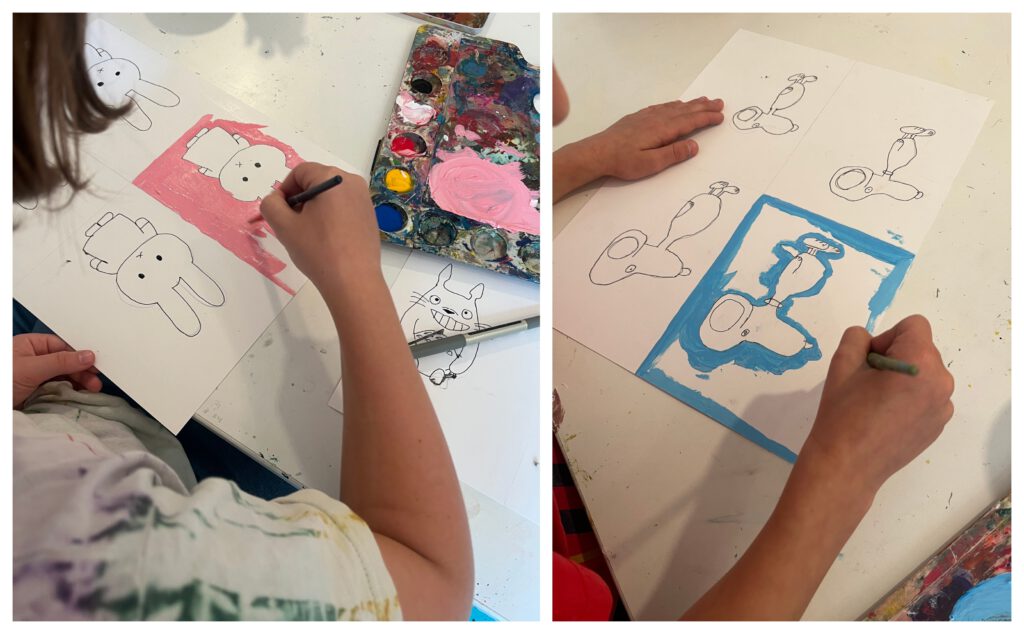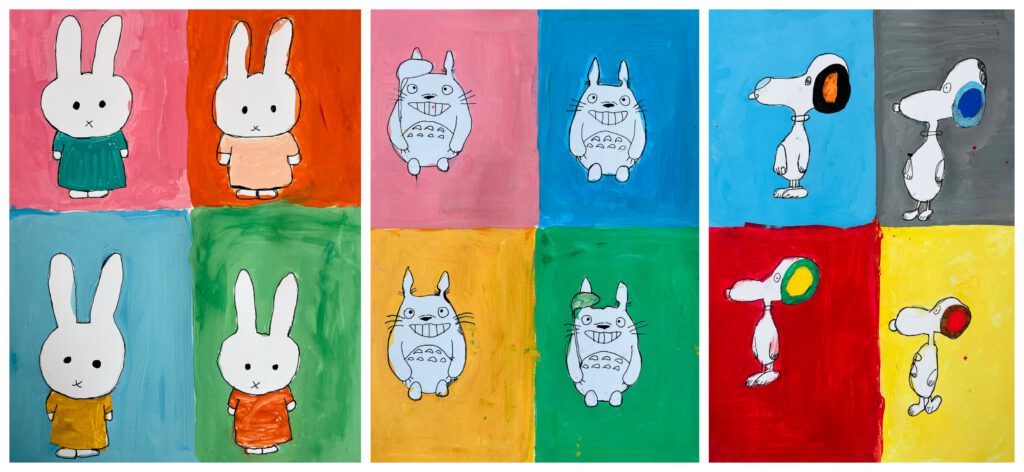


Art classes in Berlin
by artnuts



by artnuts
It’s amazing to see children studying old masters, trying to get it all same and perfect. They can take forever. And I mean forever. There are projects they just don’t last. This one does! It’s like colouring book. Relaxing and meditative. At least when the architectural part is behind.
And they really all enjoy it. No exceptions whatsoever.



by artnuts











by artnuts
Not the first time I am posting this sort of project but every time it is unique and I am impressed by the work. You can read about it in some posts bellow.





by artnuts
This sort of painting is quite an easy straightforward task as it comes with a reference. It was a fun project and kids were deeply into it.







by artnuts
Connecting to our PYP Unit ‘Cycles in nature’ we took a pick into the life of colours on our beautiful classroom poster of a colour wheel designed by Johannes Itten. This was Grade 1 and children are small so to take off we simply did some skatches of winter and summer, connecting the colours to the seasons.
When the children understood which colours belongs to which group they were asked to cut 3 warm and 3 cool shapes out of scrap paper and glue them on a bigger white paper. Each table got a plate of gouache colours: red, blue, yellow and white for the light. By mixing them they painted some of their own shapes next to the glued ones. For finals they outlined them with black adding also some patterns here and there.
I found this lovely project at Small hands big art to whom I always turn to when stuck in uncertainty. A presto!






by artnuts
In connection to our Unit of inquiry ‘Market places’ we learned about Pop Art. We painted mass produced candies.
And if you are by any chance coming from Yugoslavia you will know more than one.














by artnuts
We used a kiss print technique for this. Very easy and lots of fun and messy moments. We’ve already made beautiful kiss prints in our sketch books to start ourselves properly.
We spoke about facial proportions and how to draw a face. What shape has an eye? Where does a nose start and end? Why is an upper lip darker than the lower one? Where do the ears come in, and last but not least, how does the hair grow from the top of our heads and not the opposite way?
Of course we will not stick to all of these because we aren’t rigid but we like to talk and think and understand. And if we can use some of it that’s just a great new adventure.
So eyes are beautiful but complicated to colour. Nose is strange but funny. Lips can look crooked, and teeth too. Hair is a science of various paints and a joy to paint (Brushes had to be invented to paint hair. Hand just relaxes and everything is easy – short, spiky, curly, straight… )
Skin comes in many shades, sometimes we are blue, sometimes we are pink, who cares.
And the t-shirts? Well the t-shirts are the best part of course. Glitter, dots, stripes and stars. And all of the paint and morning toothpaste stains.

















by artnuts



by artnuts
Students were learning about natural geological events. At about same time I came across this amazing project on Small hands big art, website, that must be helpful and inspiring to anyone working in our field.
Observing the geodes we studied their shape, structure, colour, crystals. At first we paid attention to the shape, we drew the crystals and the structures, then came painting and then the decoration of the middle gap using the weaving technique.
I think it went brilliant and kids really loved it.














